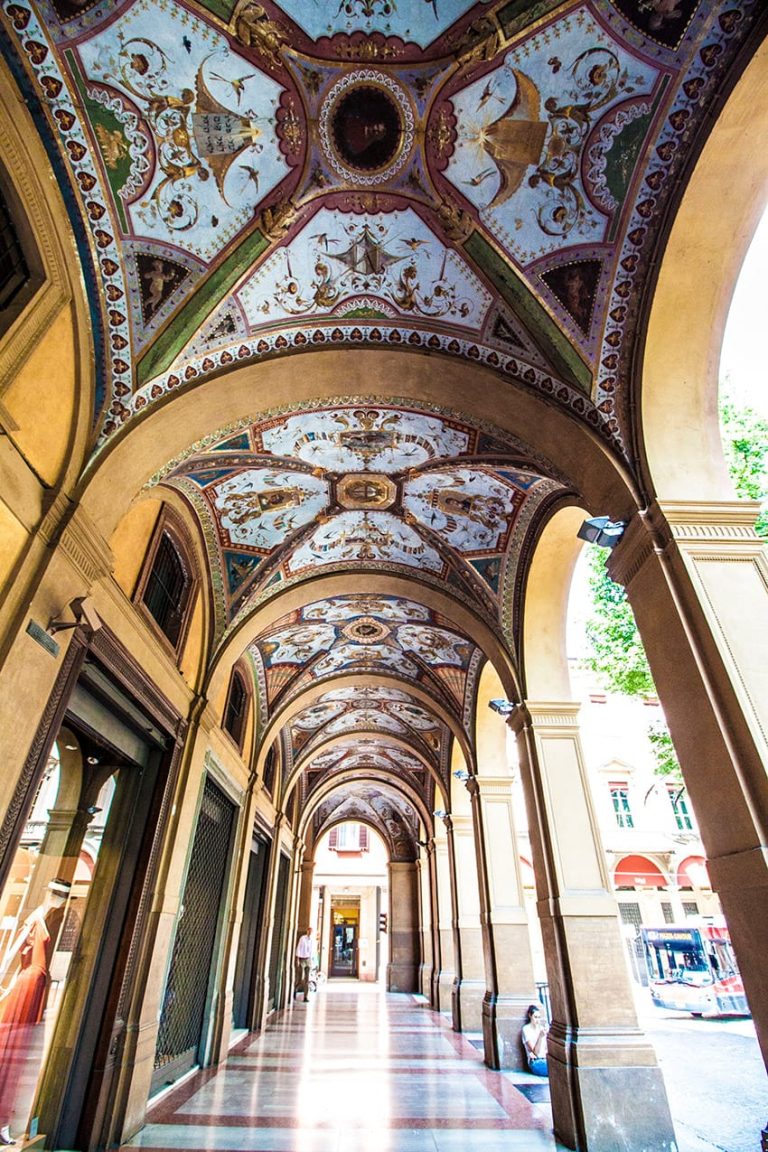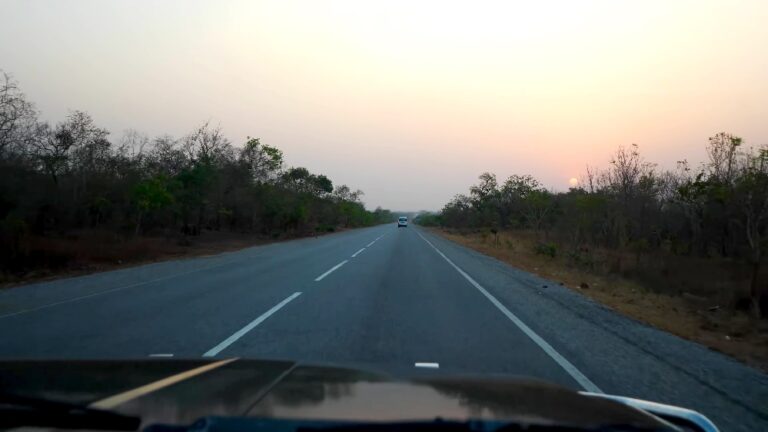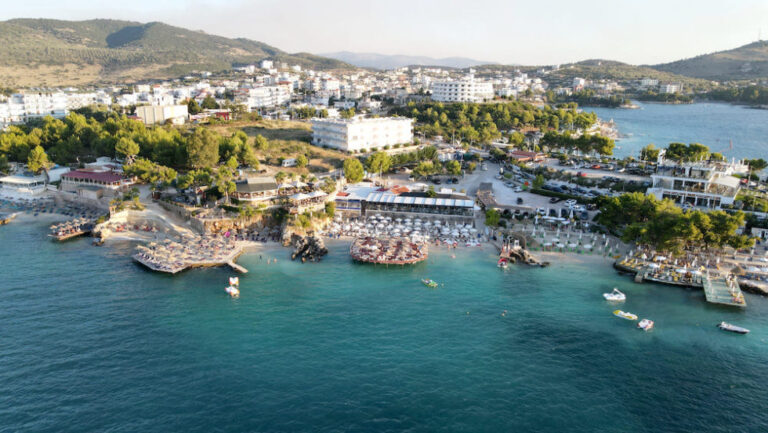Nemi’s setting is an absolute beauty. Perched above the volcanic-crater lake of the same name below, the pedestrianised compact borgo core is a mix of colourful facades, restaurant terraces – try the local porchetta (pork) sandwich – and historic buildings. It’s also usually much less visited than neighbouring Castel Gandolfo.
Unsurprisingly, many of the villages near Rome have religious connections, but Greccio perhaps has the reason to be proudest. It was here, nearly 800 years ago, that the first-ever nativity scene was created, shaping Christmas as we know it today.
Castel Gandolfo is often regarded as one of the most beautiful small towns in Italy, something that even the Pope would attest to as it is here he has his summer residence, the Papal Palace.
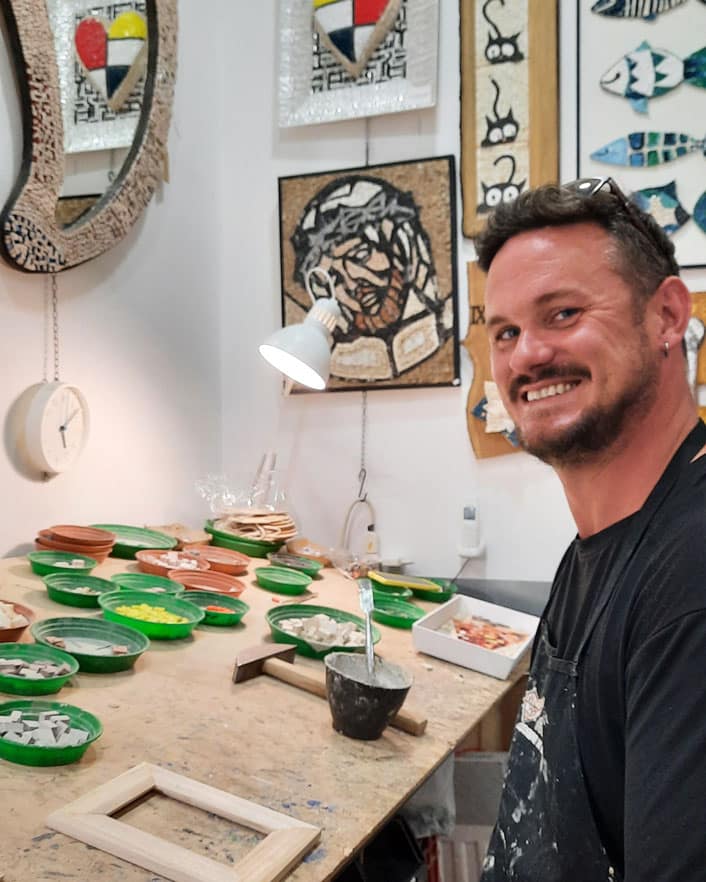
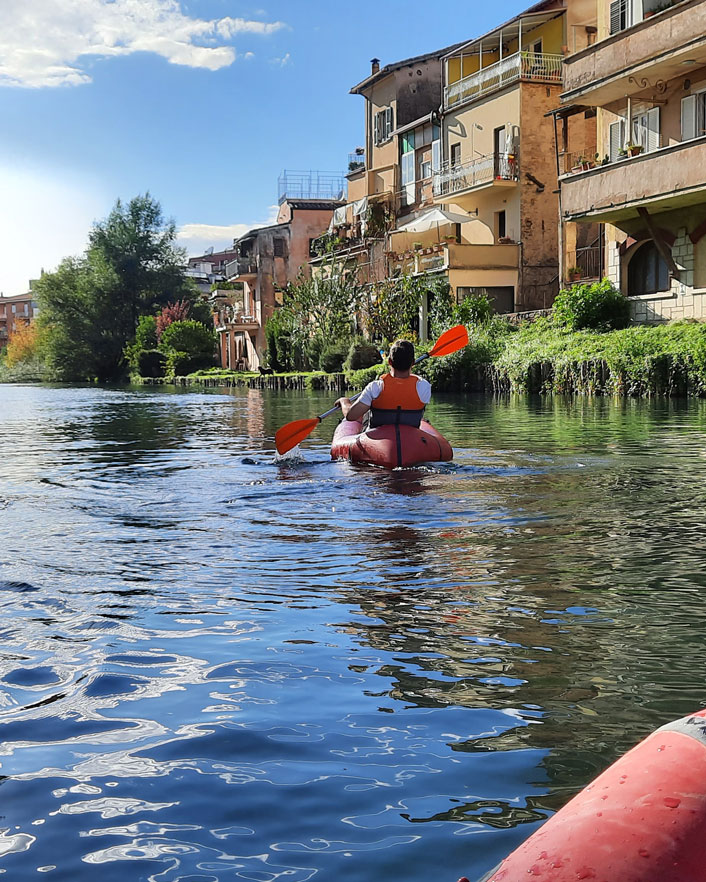
On a hill opposite, casting its eye across the borgo, is the Santuario Francescano del Presepe di Greccio. It’s here that Saint Francis came to pray, although in his time, it was sleeping under rocky caverns and seeking silence, and the grand complex came much later. Inside the small chapel, you can see where he made the original birth scene, and a much larger modern church gives the complex its splendour from afar.
Top tip: Visit both the archaeological museums to learn as much about Privernum as possible, and try to arrange an advance visit to the archaeological site.
Arpino is a cultured spot with a handful of museums and ancient sites. If you seek a small town in Italy to stay a while and soak up the good life, you won’t go wrong here.
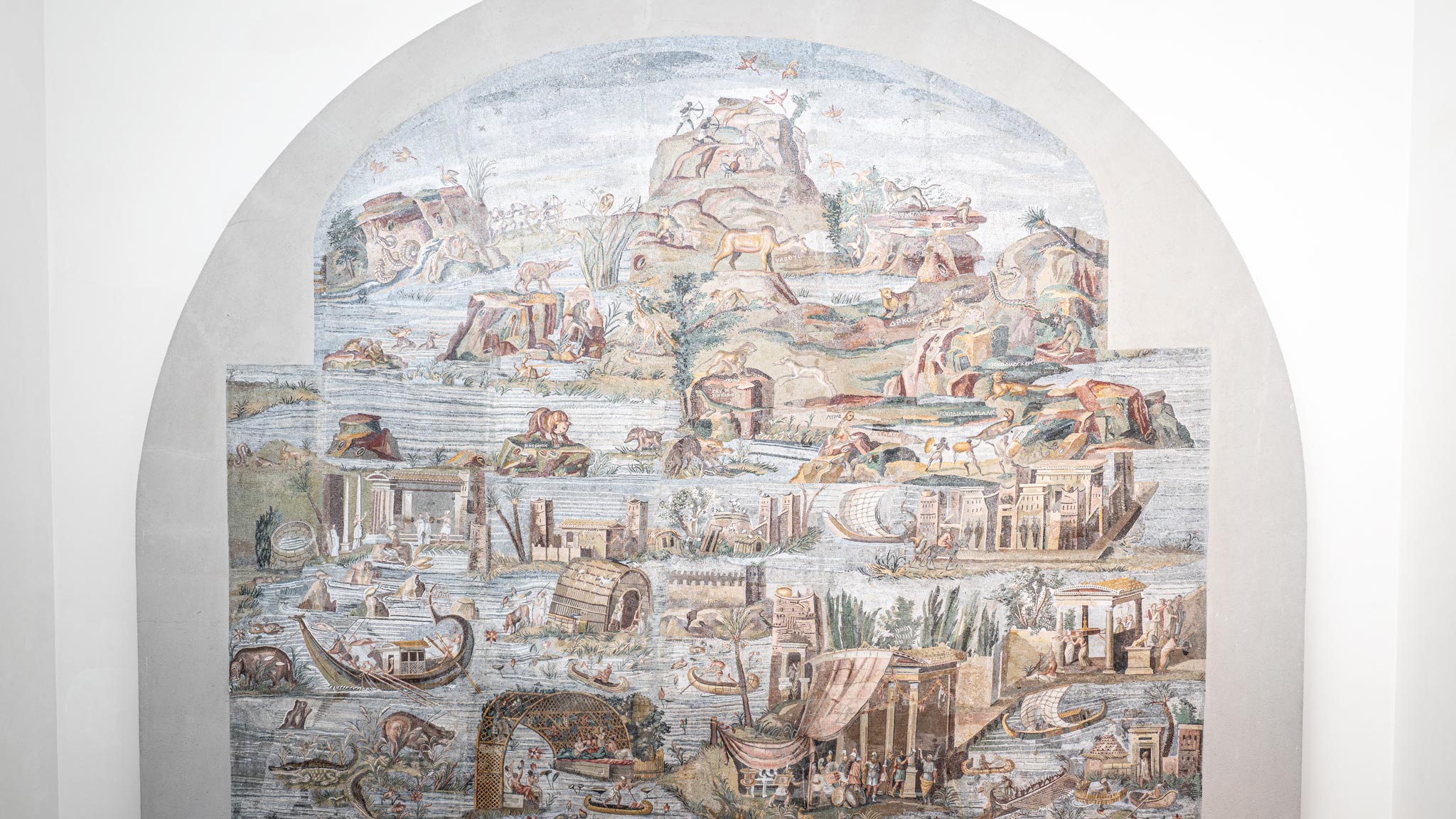
Staying central: Province of Rome (Castelli Romani) and possible day trips near Rome
Here are 15 of the most beautiful villages near Rome I recently discovered, broken up into the five provinces across central, northern and southern Lazio, and soon, I’ll add more in-depth guides to each of these villages near Rome on my Italy travel blog pages.
Yes, Atina is one of those villages near Rome you come to get away from it all, and the sublime views of the cloud-hugged valley at sunrise, where mist rises above award-winning vineyards, remind you every morning you’ve made a good choice.
Beyond the palaces and churches, I found enough to keep me busy. From taking boat tours and kayaking on Lake Albano, the cerulean-hued and turquoise-fringed volcanic crater lake below, to devouring the regional pasta specialities, such as cellitti coasted in a porcini mushroom sauce. The local white wine, Colli Albani, also featured heavily during the evenings spent on my apartment’s balcony overlooking the lake.
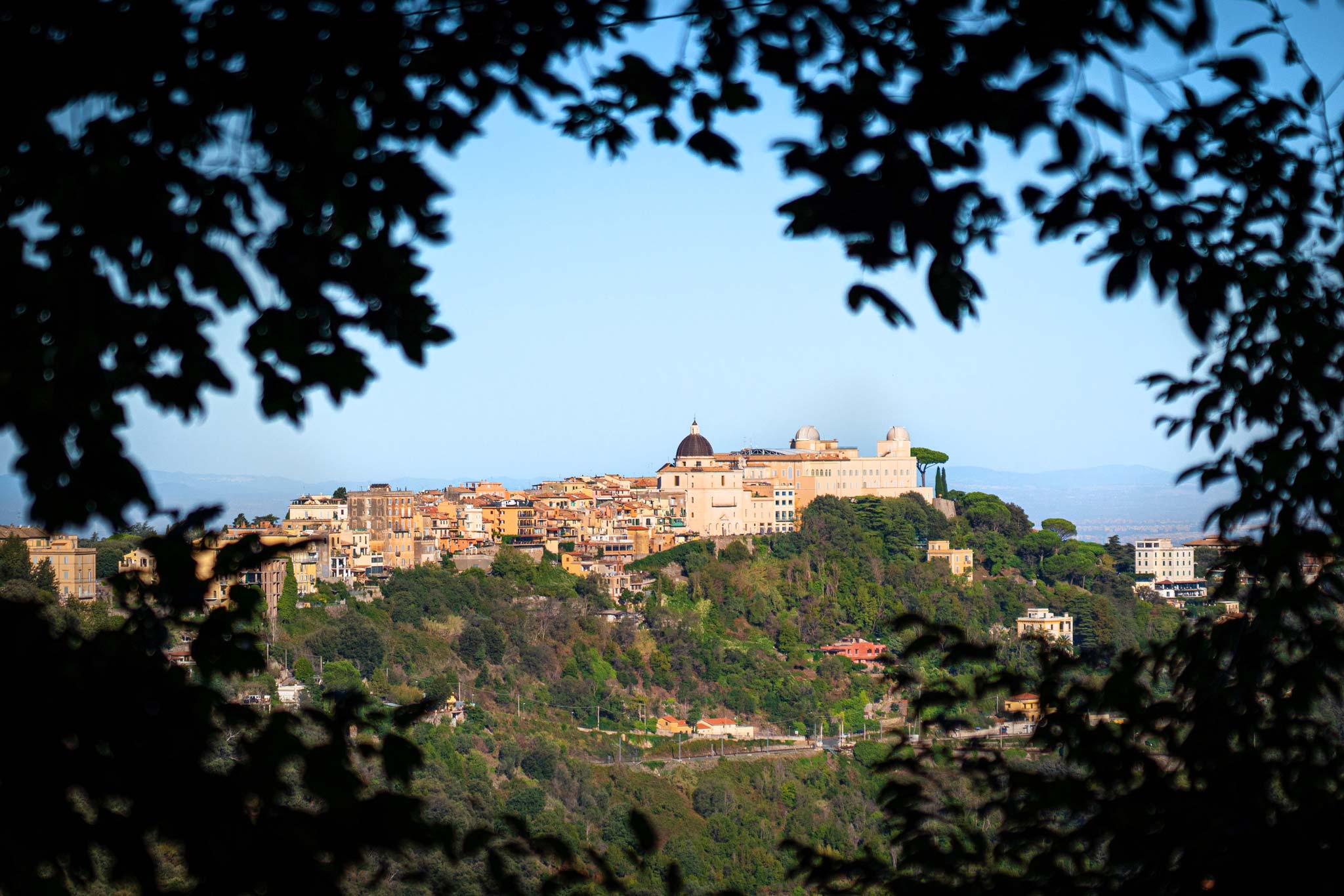
Castel Gandolfo
Down by the lake, two of Nemi’s most famous attractions can be found. The Temple of Diana, a historically significant pilgrimage and worshipping site since the 6th century BC, and the Roman Ship Museum of Nemi.
It’s a tranquil place to stay and rest, with a couple of cafes which are busy by day, as this is one of the most historical places near Rome to visit by train, the station a pleasant 25-minute stroll away.
Top tip: Book your visit to the Castello Nobili Vitelleschi and be sure to eat (or visit the delicatessen) of Radici Restaurant.
Set behind crenellated defensive walls is the historic borgo part of Vitorchiano, which has expanded to include a ‘newer’ town. Inside, ancient houses dating back to the medieval period (and even before) sit on narrow alleyways that somehow always lead you back to the town’s square and old clock tower.
Around halfway between Rome and Naples, the Province of Frosinone is the most southern part of Lazio, with the capital city being Frosinone. Perhaps the most famous attraction here is the Abbey of Montecassino, a vast complex atop the hill in Cassino, which, following its destruction in World War Two, has subsequently been rebuilt.
Top tip: Visit on the weekends to ensure access inside the castle, and book your visit to The Garden of Ninfa in advance.
How to get there? By public transport from Rome, you can take a train to Formia-Gaeta, and then a quick Cotral bus to the old centre. The journey time is around two hours by car and public transport.
Where to stay? If you have a car and want to tour some of the best villages in Lazio, then the rural retreat of L’Olivo Country Club, peeping up at the village above from the lush gardens and pool, is a nice place to unwind for a while. I only had lunch here, but after having a snoop around the grounds, I wished we had booked in for a few nights.
Set atop Mount Ginestro, the panoramas across Rome and beyond – an eternal view over an eternal city, if you will – are equally as motion picture worthy. Of course, this position was picked for a defensive reason rather than to be camera worthy, but that has sure helped make this spot a popular day trip near Rome.
While each of the five provinces that make up Lazio all offer their own culture, cuisine and plenty of picture-perfect day trips from Rome, I quickly realised that every borghi (plural small Italian villages, and borgo as the singular) promised something in common. The magic of these places was the chance to enjoy a slower pace of life, connect with the local community, and discover numerous ancient sites and stories that perhaps a day trip wouldn’t allow, so do yourself a favour and stay a while.

Nemi
High above in the wooded land of the mount, incredible viewpoints of Gaeta’s castle and borgo can be enjoyed. There’s also an impressive sanctuary here, known as the split mountain, where a narrow staircase descends to a chapel before climbing up to a unique viewpoint set in the cliff’s crack.
Top tip: Don’t visit on a Monday, you’ll find all the museums closed.
Within the greater metropolitan and nearby area, you’ll find plenty of beautiful spots to escape from the city’s busy attractions, and reliable public transport connections ensure an easy journey.
This part of Lazio felt the most laid-back and rural, especially away from the larger towns. From sipping on delicious award-winning Cabernet in small Italian towns to visiting the ‘city of Cicero’ and devouring pasta in countryside agriturismos (rural farm accommodation), all your away-from-Rome dream Italian experiences are awaiting here.
First, you should explore the medieval core of the provincial capital Viterbo, one of the best places near Rome to visit by train, before venturing to the beautiful small towns of Italy in the surrounding area. Viterbo is also a good base if you don’t have a car, with plenty of local bus connections. Also, consider heading to Civita di Bagnoregio, another breathtaking borgo that, sadly, I didn’t have time to visit on this trip.
The Roman ships, once anchored on the lake and used in religious celebrations for Diana, were nearly lost forever after sinking until they found a new home in the Museum during the 1930s. Sadly, a fire in 1944 torched both the Museum and the wooden vessels, and they were finally lost forever. However, inside you’ll find displays, recreations, and information on their storied past.
How to get there? By public transport from Rome, the best bet is to take a bus to Palestrina and another up the hill if you don’t want to do the steep climb. By train, you can go to Zagarolo station and then switch to a bus. Driving takes an hour, with the quickest public transport journeys a little longer.
The limestone complex is grand yet simple in its decor, with some unique little details, such as a crown carved above the rounded window and an impressive mosaic nearby the cloisters.
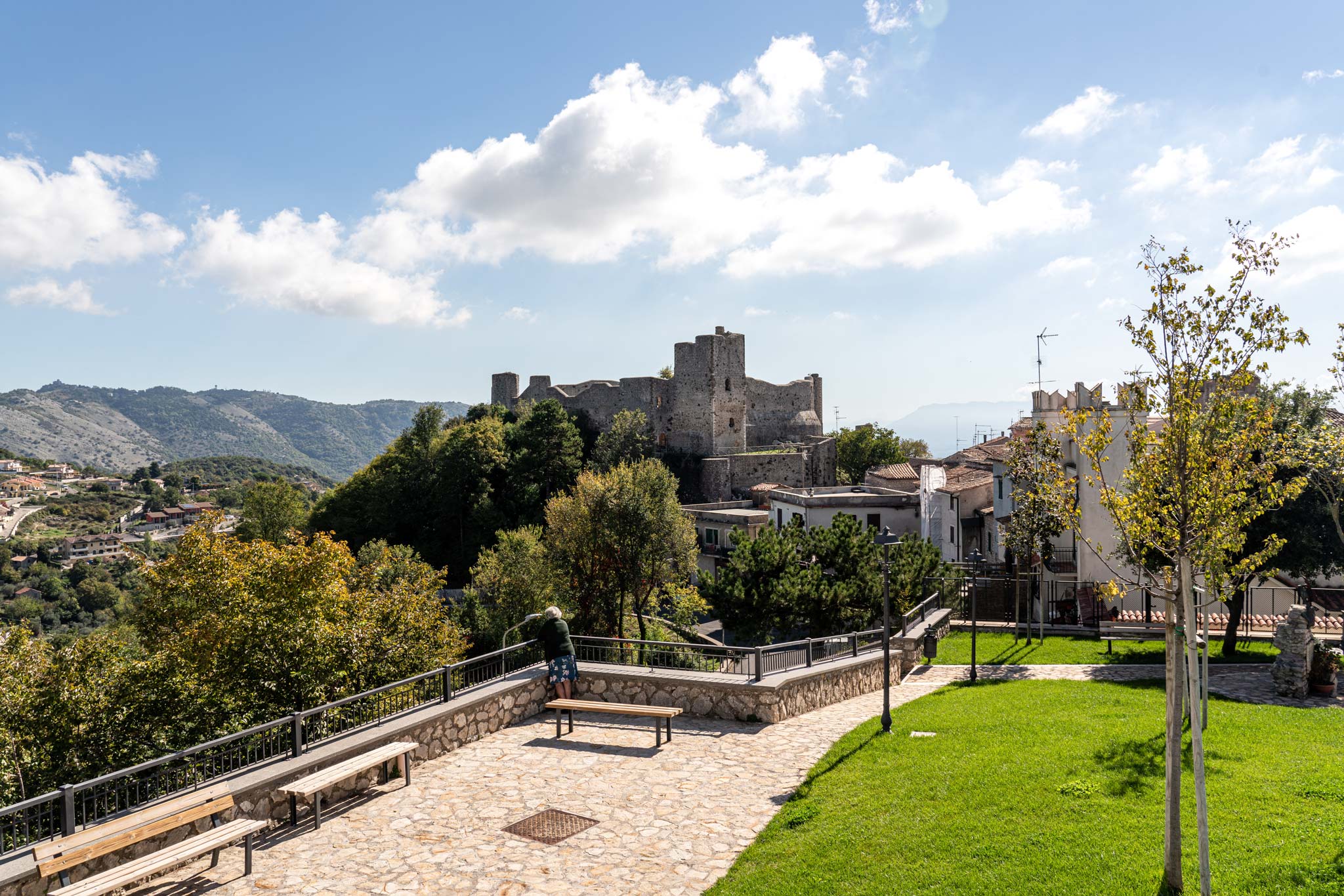
Castel San Pietro Romano
Inside the 16th-century tower, a simple structure that rises dramatically next to the hamlet’s entrance lies a true hidden gem of Italy. The Torre dell’Orologio wasn’t discovered until 1974, when repair works took place, but boy, it was one big discovery.
Why visit? Sweeping views across the countryside and eternal city, and a side trip to the amazing National Archaeological Museum of Palestrina
Top tip: Book your visit to the Torre dell’Orologio in advance with the town’s InfoPoint, as you’ll need to enter with a guide.
Why visit? An ancient abbey escape coupled with a lived-in medieval town twin
The story of Labro’s return to glory is an interesting one. After World War Two, this medieval hilltop borgo was falling into disrepair. The traditional stone houses were crumbling, residents were departing for better futures, and it seemed that Labro’s destiny was to be like many of the other ghost towns now found across Italy.
How to get there? By public transport from Rome, take a train to Orte or Viterbo and then a Cotral bus; the journey takes around two hours. By car, Vitorchiano is 90-minutes from Rome or two and a half hours from Florence.
Arpino has a peculiar form – but in a good way. I’d go as far as saying that the X-design of the settlement, which has been shaped over the centuries, makes it one of the most beautiful small towns in Italy, especially once you start diving into its history.
The ‘Akropolis’ – as the old central core is known – is protected by 2500-year-old polygonal walls, although the multiple medieval towers that once stood here are long gone. Luckily, the walls of the triangular-shaped storied castle that dominates and defines the village are still mainly intact, and you can peek inside the open-air slice of history. Named Rocca dei Colonna, it protected this village near Rome in its influential family-run heyday, warding off any unwelcome attacks from Rome and the Vatican.
One of the most beautiful small towns in Italy (according to me, at least), Vitorchiano is a breathtaking place that merges with the volcanic rock below. Sheer buildings climb up the side decorated with hanging laundry, and the whole thing looks like a movie set.
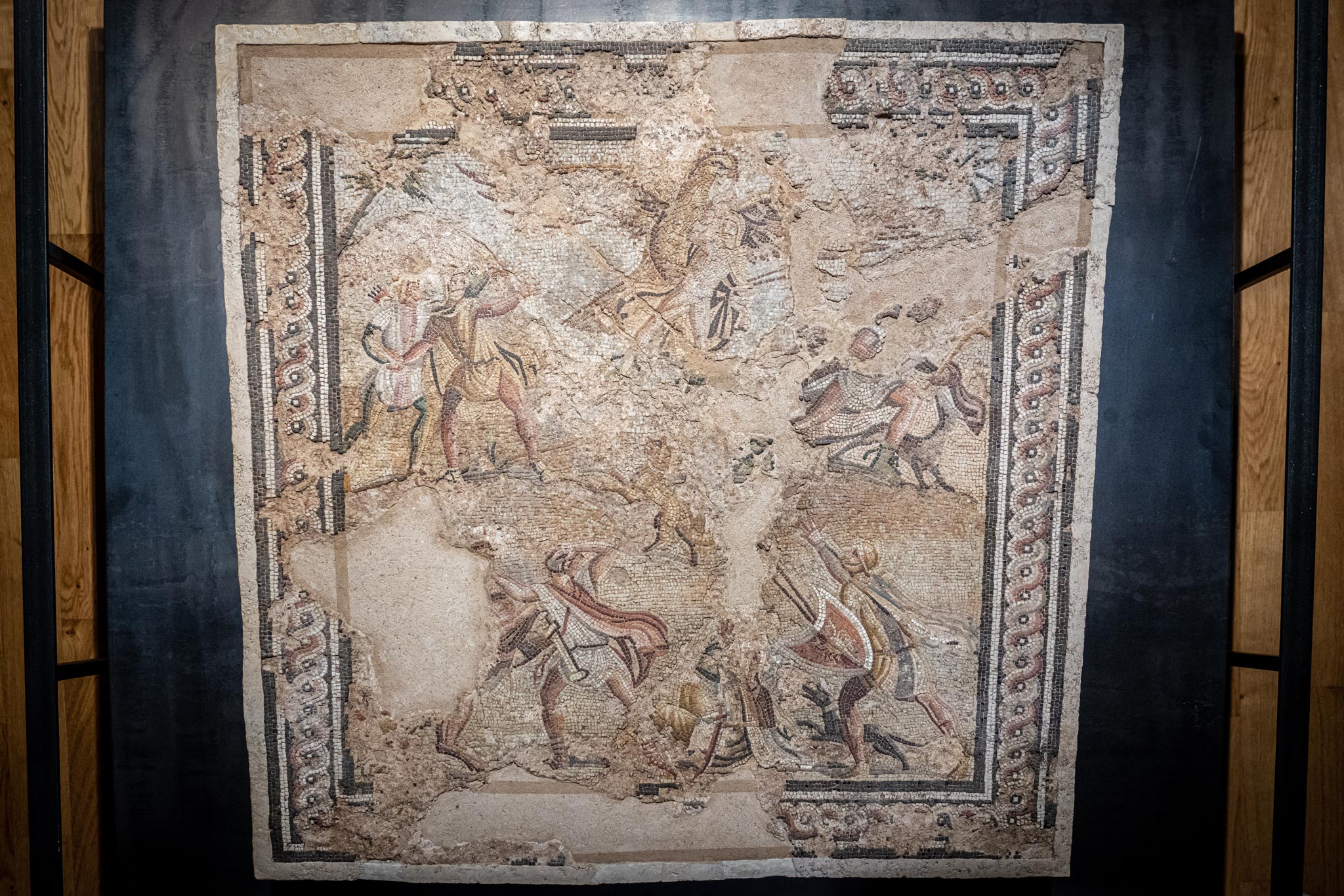
Heading south: Province of Latina – villages near Rome
Priveno’s menu of treats is delicious, with a heavy focus on buffalo produce, such as mozzarella and meats, multi-award-winning Orsini Olive Oil, and Chiacchietegli di Priverno (violet broccoli from Priverno). By night, this lived-in small Italian town is far more lively than Fossanova, with the narrow cobbled streets glowing under orange-lamps and the sound of laughter and enjoyment ringing through the air from restaurants and bars.
Top tip: Try to ask the Town Hall staff if they will show you some of the grand rooms in the building, which is the Palazzo Orsini.
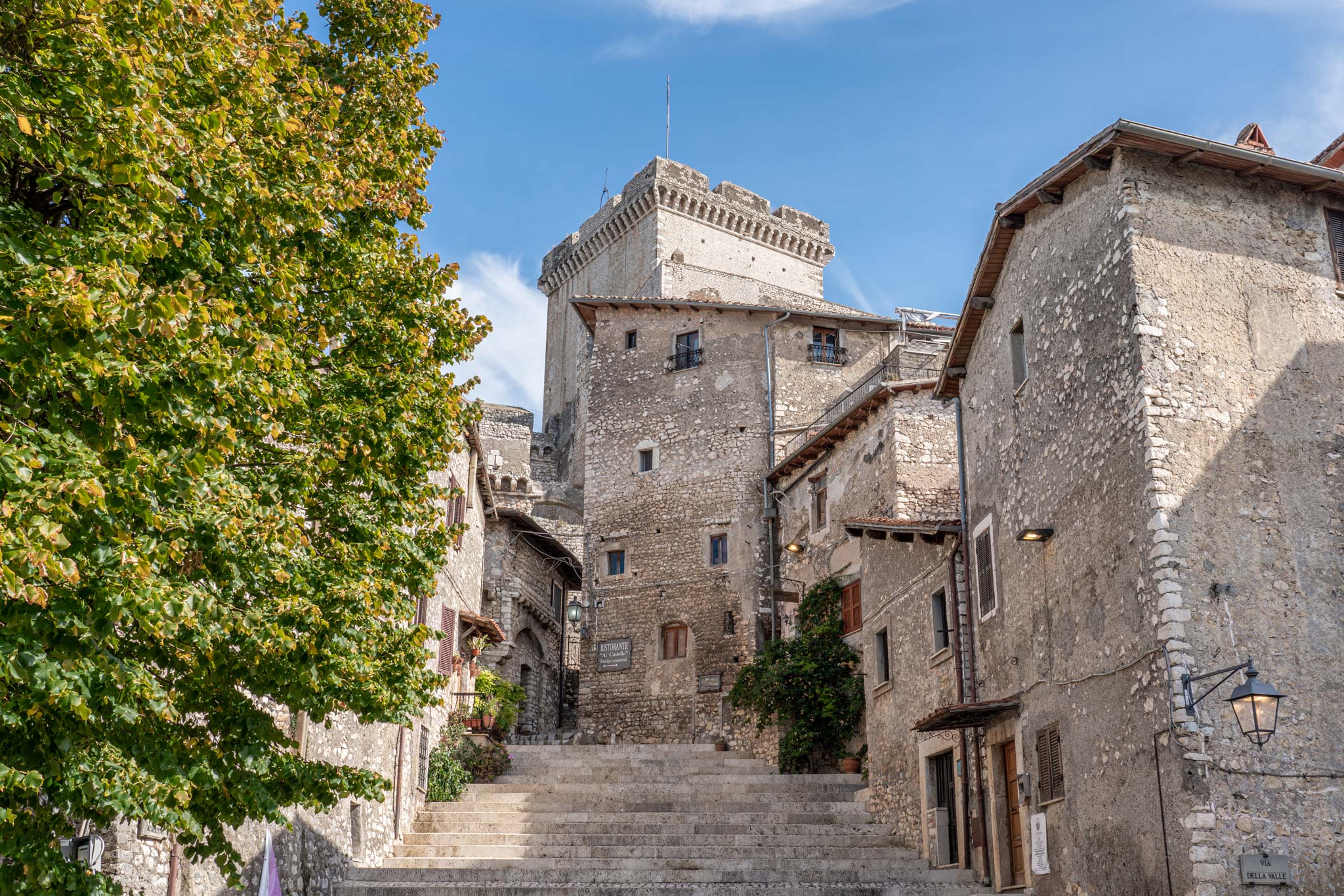
Sermoneta
Top tip: The €5 to enter Plestrina’s museum is worth it alone for the Nile River Mosaic – be sure to go to the top floor (it’s a confusing building) so you don’t miss it.
Capping a low hill, Contigliano’s medieval streets offer fantastic views over the Rieti Plains, where cannellini beans are grown, and hiking and biking trails crisscross the lush farmlands. With history from the Bronze Age period, and churches dotting the nearby landscape from the Middle Ages, small Contigliano doesn’t shy away from sharing its own slice of history.
Why visit? Spectacular lake views coupled with the incredible summer residence of the Pope
One of my favourite moments came in La Musa Mosaici, where I learnt to hammer stone pieces and craft a mosaic. While my design certainly wasn’t going to compete with the many Roman masterpieces found in Lazio, I came away with a new appreciation for this challenging art form.
Nearby, the Cannuccete Valley provides some beautiful walking trails, but the most impressive close-by attraction is the Archaeological Museum of Palestrina.
Inside the old guesthouse, archaeological discoveries from the ancient Roman city of Privernum can be witnessed, with the collection continuing in Priveno’s city museum, the old medieval town nearby, which gained its name from the historic settlement.
Later the walls fell (figuratively and literally), and now one of the best examples of early Gothic architecture in the country is open to all visitors, and perhaps you’ll even encounter a cheery monk as you wander around.
Where to stay? Labro is one of the most serene places to visit near Rome (if you ask me), so it would also be a lovely place to stay a while and slow down – which is helpful, as many of the small accommodation providers here have minimum stays and renovated Casa Luce is one such place.
Parts of this land are called Castelli Romani due to the numerous castles around, meaning you can count on these places to visit near Rome to be packed with history, photogenic panoramas, and plenty of memorable moments without venturing too far into the Lazio region.
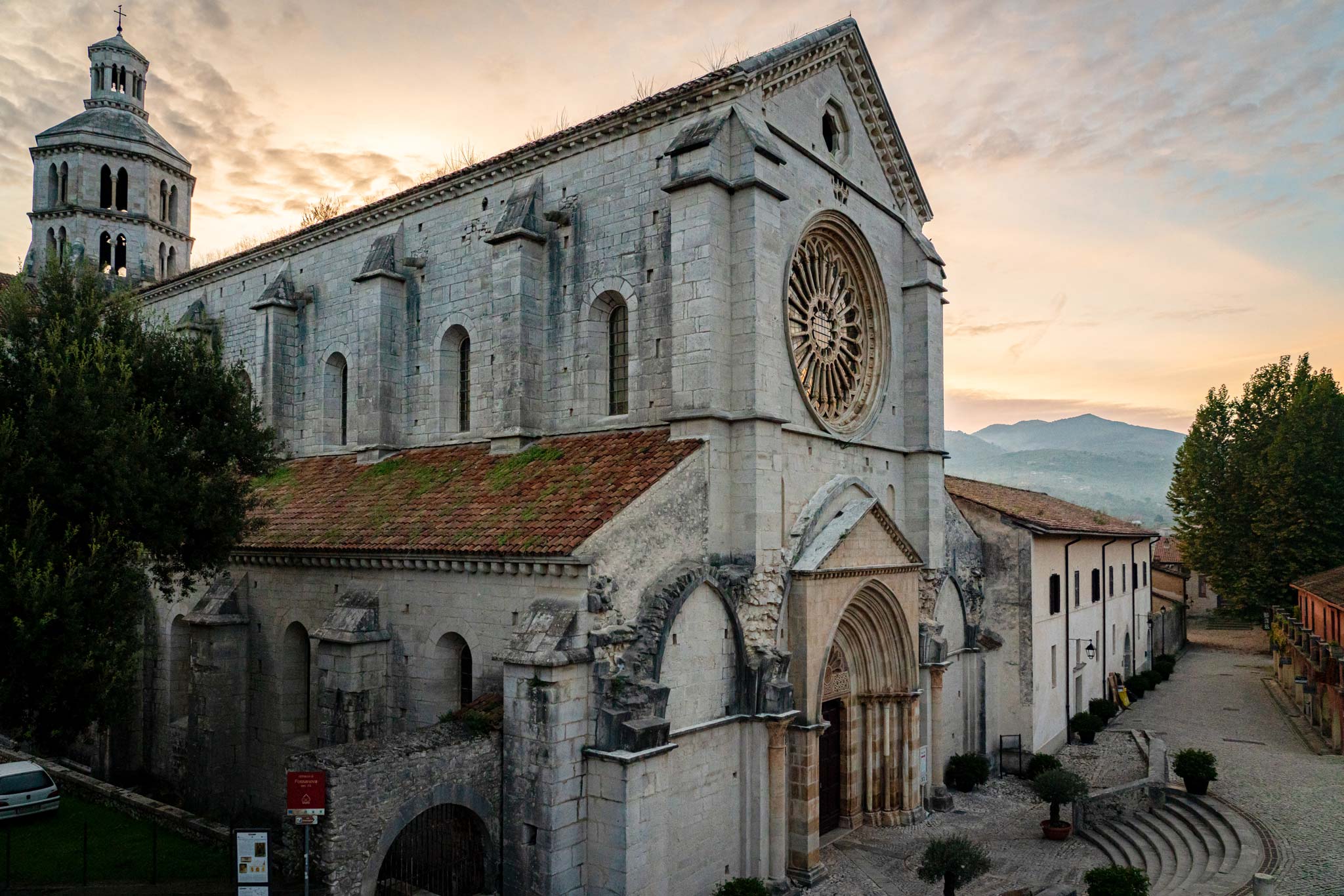
Fossanova (and Priverno)
Where to stay? If you want to stay in a super peaceful and small town in Italy, then Bomarzo does the trick – although perhaps basing yourself in Viterbo will make getting around by public transport easier.
Where to stay? Do yourself a favour and spend a few nights here. It’s a great place to chill on the beach and visit historical sights, but it also has a good evening energy and trendy bars, especially on the weekend. I made the mistake of just staying one night and then ended up coming back again at the end of the trip. For a beach-view stay, the simple rooms at Hotel Serapo sufficed (the upgrades to sea views were around €15 when we arrived as we had booked a normal room), or right in the Old Town, we got an amazing bargain at B&B La Gaetana, which has a terrace overlooking the tower and sea, by calling directly to the owner.
Well restored (and in parts, reconstructed), Sermoneta’s history is intricately linked with the Caetani family, who built the magnificent grand palace alongside the defensive walls.
Another intriguing attraction, carved from the local peperino stone but built much later, is the Park of Monsters, known as the Sacro Bosco.
Why visit? Medieval village vibes coupled with an impeccable hidden tower discovery
The ‘Sacred Valley of Rieti’ was a favourite place of San Francesco (Saint Francis of Assisi), who came to this tranquil setting for meditation and prayer. Following in his footsteps nowadays are many pilgrims completing the Saint Francis Walk alongside those who simply seek out the stunning nature without the religious connotations.
How to get there? By train from Rome, the journey to Castel Gandolfo takes around 45-minutes, with a short walk uphill after. By car, if there is no traffic, you’ll arrive in under 30-minutes.
Looking to explore beyond the region of Lazio? Consider heading further north to devour the foodie paradise that is Emilia Romagna, or diving into some of Italy’s hidden gems around the country.
Top tip: If you wish to visit the Town Hall museum, come on the weekend.
The Museo C’era Una Volta, housing the endless miniature works of Daniela Caruso, was an astounding find. With fully animated tiny models and scenes of local activities coming to life with the flip of a switch, it’s an absolute delight, as was Daniela, who invited me to join her family for lunch.
Where to stay? Sermoneta is certainly one of the most beautiful small towns in Italy I’ve visited, so I’d suggest soaking it all in by staying a little while, perhaps at the homely and historic B&B Le Principesse.

Gaeta
That’s not to say there isn’t a lively community here, though, and on Monday mornings, you’ll find the streets overflowing with the market, which expands far beyond the main square, as it has been doing since the 16th century.
The capital of Rieti Province also goes by the same name, and the valley here is a verdant retreat ripe with cycling, horse riding, and hiking adventures – plus some water sport options such as bird watching by the lakes and rafting down the rivers. Once, the whole valley was submerged until the Romans learnt how to drain the water, and they left plenty of legacies. Perhaps the most fascinating for a visitor is Rieti Underground, which you can visit on an evening tour, one of the places to visit near Rome that isn’t a borgo.
More extensive than most of the other villages near Rome, as the historical borgo part is actually the small, high-above L’Acropoli di Civitavecchia, there’s plenty of life and activity to be found in the streets.
The most northern province in Lazio, Viterbo, is awash with cute villages that aren’t too far from Rome, and many of the borghi here have Erutscean roots. The Etruria people, who predated the Romans, reached the peak of their civilisation in the 6th century BC, but their story goes back centuries further. After the Romans came, this region was renamed Tuscia, and the countryside and rolling hills certainly give the area a Tuscany-like feel.
Separated from the beautiful bay of Serapo Beach and the bustling thoroughfare of Via della Indipendenza by Monte Orlando park, the old harbour-side part of Gaeta feels very tucked away.
These homes have been occupied by many of Arpino’s most influential citizens, from the Roman scholar, philosopher and statesman Cicero, to the Pantheon’s architect Marco Agrippa and the painter Giuseppe Cesari.
How to get there? Surprisingly, given it’s so close to Rome, it’s not so direct to get here. You’ll need to take two buses and allow at least 90-minutes or hike the trail from Castel Gandolfo. By car, you can arrive in less than 40 minutes.
The compact medieval core of Bomarzo sits above the park, and while it won’t take long to explore the streets, a trip here combined with the nearby attractions shows why small-town Italy shouldn’t be underestimated.
Outside the walls, there are two places you shouldn’t miss. First, the Valle delle Sculture, which sits below with aged-shaped stones, and second, the Rapa Nui-carved Moai statue, crafted from the local volcanic peperino rock by a family of Easter Islanders. From here, you’ll also get a magnificent view of the steep sides of the village.
Walking around, you’ll feel like you’ve stepped into the Middle Ages. From the wooden beamed Loggia dei Mercanti, an old hub of commercial activity constructed in 1446, to the frescoed-heavy interiors of the Chiesa di San Giuseppe and Oratorio dei Battenti, every corner seems to have another treasure to discover.

Further south: Province of Frosinone – places near Rome and Naples
Recently, I heeded that invitation and set out on my own Viaggio Italiano to discover some of the best places near Rome to visit by train, bus, and the occasional taxi. Trying to keep sustainable travel at the forefront of my mind, I discovered even the loftiest hilltop villages were accessible with a little patience and planning, with plenty of treasures awaiting after the climb.
Inside the tower, a perfectly preserved bell tower was found, which had been hidden in plain sight for centuries, unbeknown to the villagers. This incredible and ornate 12th-century find, which would have sat alongside the church, was excavated over the coming years, and now, you can enter inside and climb to the top for sweeping panoramas. However, the true magic is the original architecture.
Even before a fascinating discovery was made, medieval Bassano in Teverina was already one of Italy’s most beautiful small towns. The ancient streets, Roman-built laundry fountains, and 12th-century church are a delight, but there’s also a secret here that was nearly lost to time.
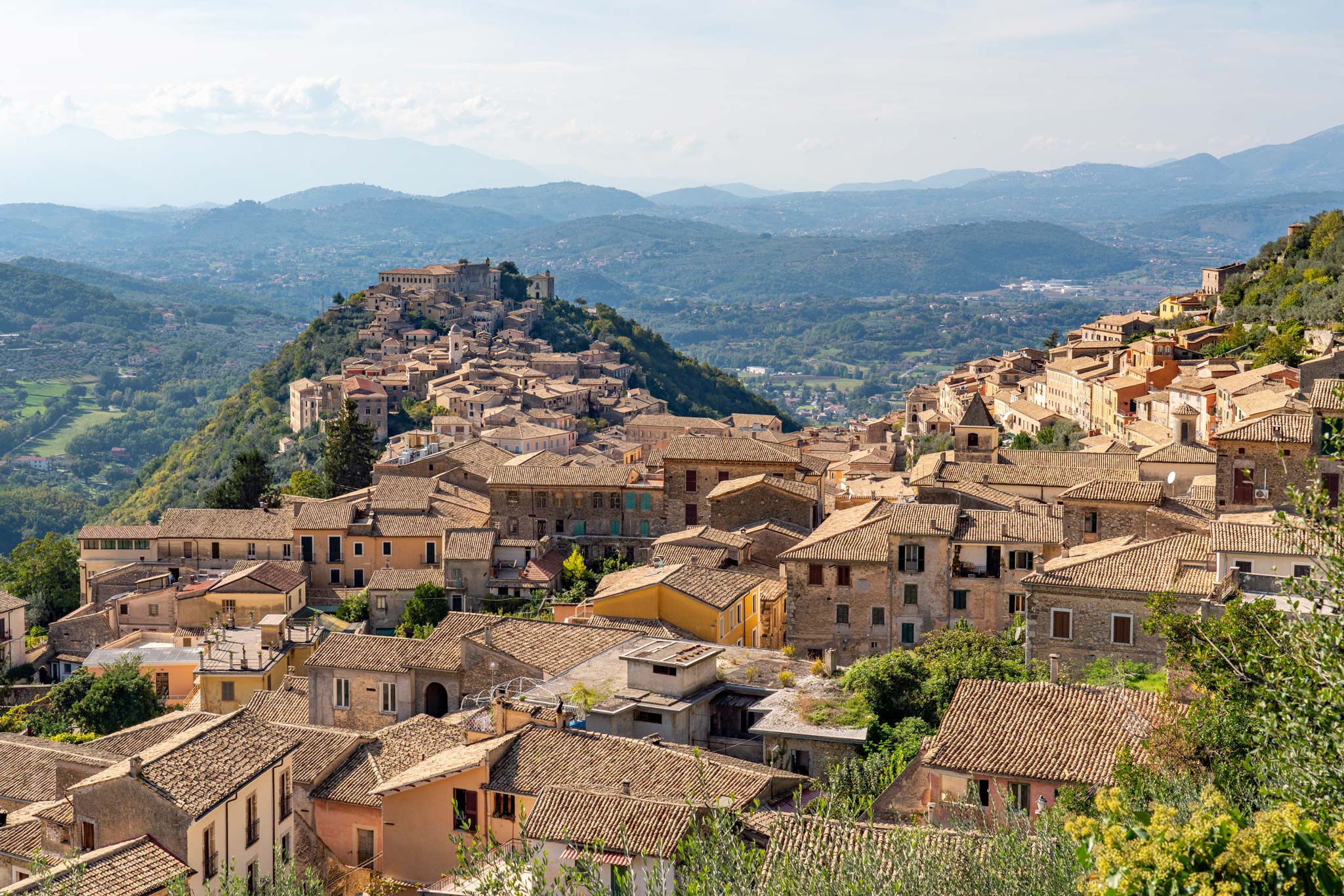
Arpino
Certainly, these borghi could be day trips from Rome, but they will all invite you to slow down and stay a while, and with plenty of museums, delicious regional produce, and Roman artefacts to discover, you might just want to heed their invitation.
Top tip: Head to the Civitavecchia’s tower before 1 pm so you can climb it for the best views.
After you’ve had your fill of palaces (there are a few here, including the 14th-century mosaic-displaying town hill), settle into one of the local vineyards to sip on rich ruby-red Cabernets. Having achieved DOP status (Protected Designation of Origin), you can expect quality wines from these aged vines, and the backdrop adds to the flavour.
How to get there? By public transport from Rome, you can either take the Cotral bus to Rieti and then change to the Greccio bus, or a train to Terni and then a second train (but note the train station isn’t so close). The quickest journey by public transport is around two and a half hours. By car, Greccio is around two hours from Rome.
Of all the medieval hilltop villages near Rome, Sermoneta has something special. Overlooking the Mediterranean Sea and oozing history from its narrow cobbled streets, the quick journey time and connecting bus make this one of the best day trips from Rome. However, personally, I think it’s a magical place to spend a night or two.
For such a notable destination, it’s relatively small, but certainly not without its charm. While the imposing entrance gates, the 1624-built palace, and impressive churches are all classical, you’ll find a contemporary dining scene here, with trendy restaurants, many of which seemed to have been designed with Instagram in mind.
My favourite thing about San Donato Val di Comino though, was spending time in its ‘living room’ – the main village square where locals, cats and travellers convene to share stories over coffee, beers and homemade wine. This is the magic of those slower-paced trips to small Italian towns, and I was eager to soak in every second of it.
Following the trail to the lower part of Arpino, you’ll pass near the mines before arriving at the well-lived-in and colourful streets below. Here, walls are stacked high with stonework from different periods – pre-Roman, Roman and mediaeval – sometimes topped with more modern houses above.
Where to stay? While Castel Gandolfo is a good option for a day trip near Rome, staying a night or two will allow you to appreciate the quieter side of the streets and give you more time to experience the lake and palace. The suites and apartments at Atlantis Inn, especially those with lake views, are a delight.
Why visit? Incredible medieval village on a hill packed with Caetani family history
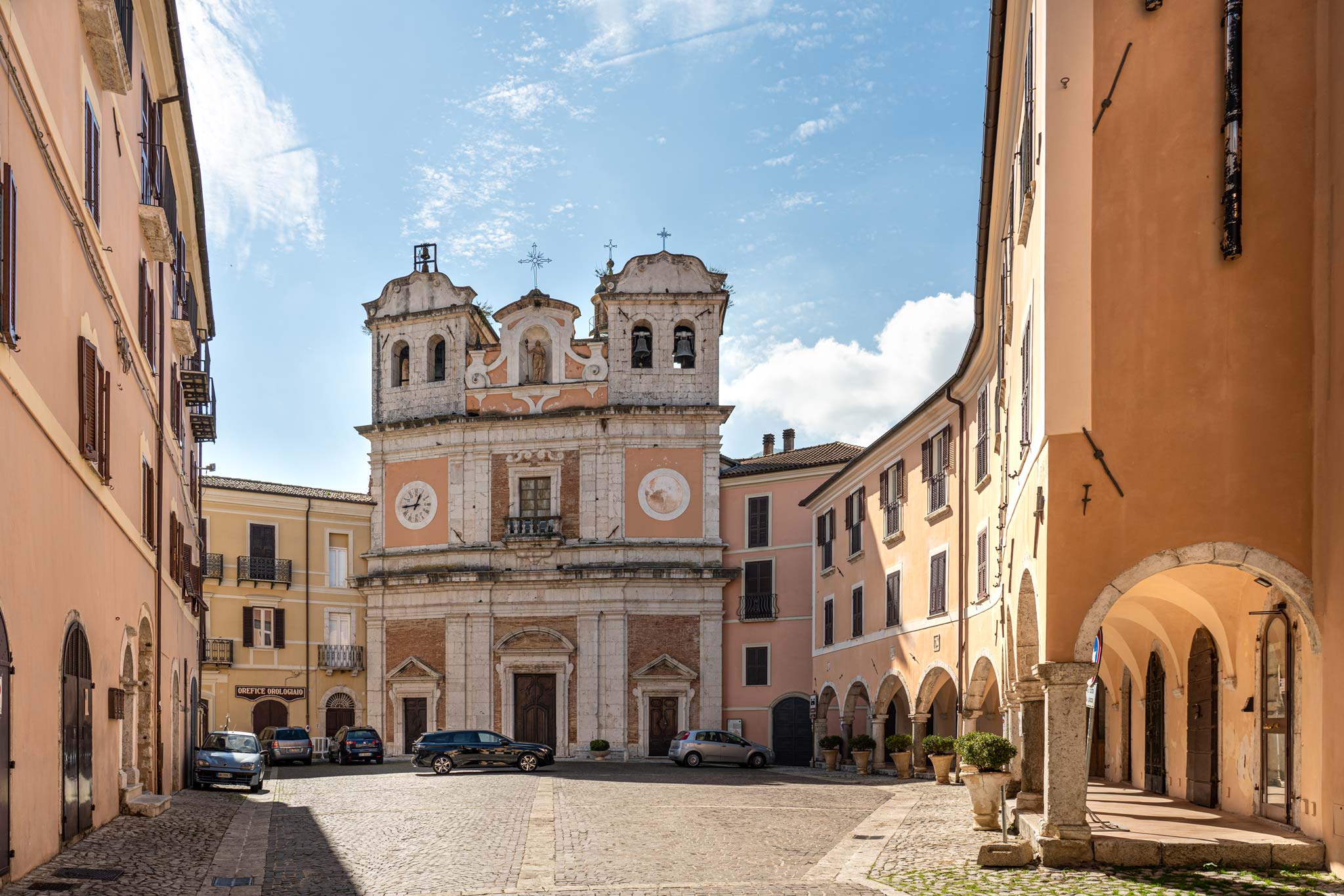
Atina
If you want to combine a few of the villages near Rome together, then Castel Gandolfo, Ariccia, and Nemi are easily blended – especially if you follow the gorgeous walking trail between the two lakes.
Where to stay? Greccio is pretty small as a village itself, with most of this village near Rome’s attractions being in the surrounding valley walks and the sanctuary. Abbazia di San Pastore provides lavish and historic rooms nearby in a huge old building.
Contigliano is another of the villages near Rome overlooking the Rieti Valley and is easily combined together with Greccio. In fact, many of the natural attractions and activities, such as horse riding, and birdwatching on the lakes, fall between the two borghi, meaning they could be combined into a long day trip near Rome, though the gorgeous setting might lure you into staying some nights.
How to get there? By public transport from Rome, you can take a 30-minute train to Latina station and then a bus (there may be a wait, so plan with the schedules) up to the village. To drive takes a little over an hour.
If you’re feeling hungry, be sure to order the most famous local dish, Cavatelli Vitorchianesi, a thick spaghetti-like pasta resembling an earthworm and topped with a rich tomato sauce. As far as villages near Rome go, this one is a real winner!
As you walk the tranquil streets and mountain trails nowadays, it’s hard to imagine such terror and misery in this calm village near Rome, although monuments and war-location reminders are still visible.
Why visit? For the religious sanctuary and nativity scene connections with Saint Francis
Grand statues and sculptures, masterfully designed mosaics, and ornate wooden ceilings adorned with paintings decorate Priverno’s museum, and outside, on Piazza Giovanni XXIII, there’s an architectural feast. Flanked by the imposing arched portico of the Town Hall, with its arched portico and a grand staircase leading to the Cathedral, this is the beating heart of the commune, where people flock to enjoy drinks and local flavours.
Gaeta was the only borgo I visited in Lazio that sits on the sparkling cyan waters of the Mediterranean. While the old part is one of the most magical villages near Rome to while away some days, the larger and newer section forms one of the most charming coastal small towns in Italy.
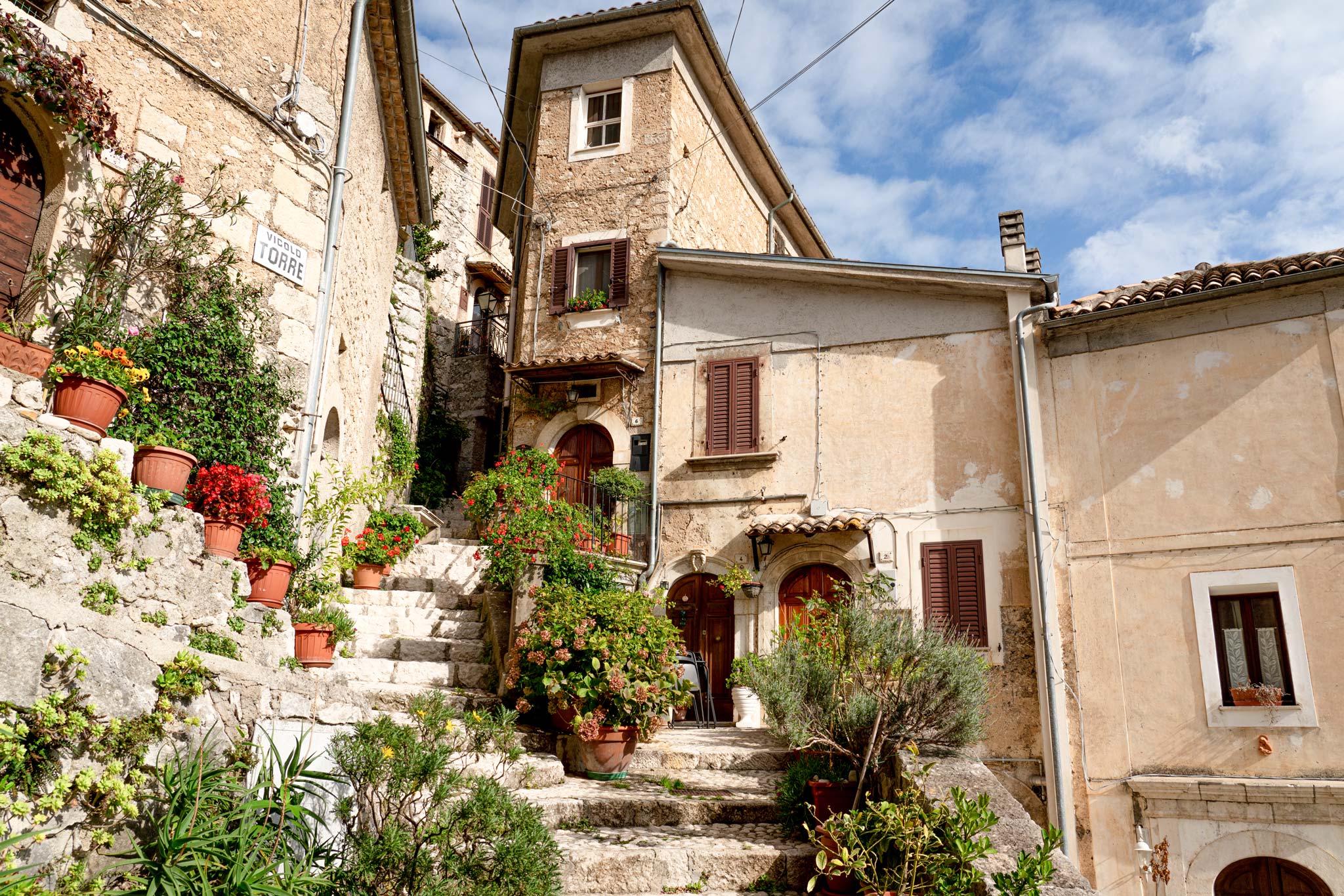
San Donato Val di Comino
How to get there? By public transport from Rome, take a train to Orte or Viterbo and then a Cotral bus; the journey can take as little as one hour. By car, Bassano in Teverina is 90-minutes from Rome or two and a half hours from Florence.
Why visit? The Roman Ships Museums and the adorable small village by a lake atmosphere
From the castle’s turret, wonderful vistas of the verdant-enveloped Lago di Piediluco span before you while the historical archives hold treasures of their own. Documents from as far back as 1191 and even signed by the pope form part of the family’s collection, with a 17th-century handwritten account of the borgo’s history particularly fascinating.
From the medieval tower that crowns the Civitavecchia, you’ll get your bearings as Arpino rises up the mountains and spills out before you. You’ll also be looking down on the fortified polygonal walls and ancient cyclopean pointed arch, free from mortar and still standing after more than 2500-years. This area had been inhabited since the Volscian days (around 1000 BC), with the local puddingstone quarries a reason many chose to build and construct here.
Why visit? Stunning setting perched high above a lake with adorable stone streets
How to get there? By public transport from Rome, you can take a train to Fossanova-Priverno station and then a quick Cotral (or commune) bus to the village or town. The journey is around 80-minutes by both car or public transport.
Spanning out from the eternal city, the region of Lazio is sprinkled with a plethora of stunning villages near Rome waiting to be relished, and with far fewer visitors, they nearly all deliver a tranquil escape, especially outside of the summer season.
Top tip: Some museums and churches are only open during certain hours and on certain days, so check and plan ahead.
Sadly, the weather wasn’t on my side when I visited Labro, but that didn’t stop me from being enchanted by this small town in Italy. Umbrella in hand, I wandered the web of light-stone houses, churches, watchtowers and chapels, seeing how restoration had brought new leases of life, such as churches converted into theatres. Crowning the village is the family-owned Castello Nobili Vitelleschi, which you can enter and tour accompanied by the daughter of the current noble owner.
A literal movie star, Castel San Pietro Romano’s cinematic mountaintop position (752 metres) has seen it featured in various silver-screen films and plaques across the borgo highlight scenes and the settings.

Heading north: Province of Rieti – places to visit near Rome
Why visit? The nearby Etruscan Pyramid and Sacro Bosco’s fascinating statues
The Province of Latina stretches south and towards the coast, packed with some of the best places to visit near Rome. While the provincial capital, Latina, is much more modern than the medieval Italian villages close by, there is plenty of good public transport to be found, and it won’t take you long to escape to coastal playgrounds and hilltop towns from the capital.
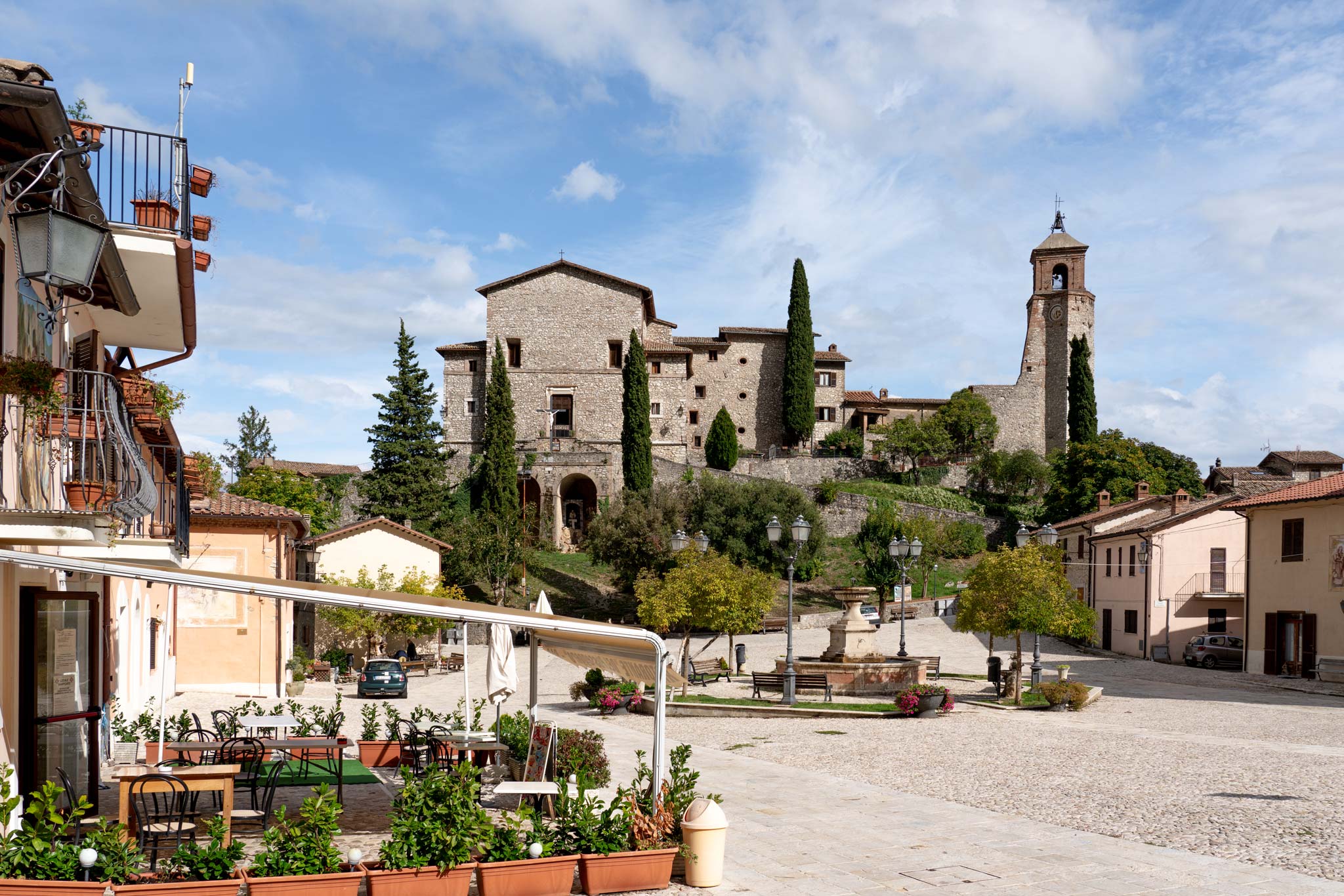
Greccio
In the old village core, the streets are a delight to explore – although the compact size means it won’t take long. Perhaps the most impressive building, the Collegiata di san Michele Arcangelo, a baroque-style church with a grand facade, is a testament to the community’s spirit, as it was constructed using villagers’ funds rather than money from the church.
The historic part of Bomarzo might be one of the smallest villages near Rome, but in its surroundings, there are some rather unique attractions to discover.
Top tip: Book a packrafting adventure with 42 Gradi Nord to experience the river.
Luckily, the fate of this village near Rome changed thanks to the owner of the borgo’s castle and her architect husband, who set about restoring the whole hamlet to the original design. With the return of some 400 residents, Labro came back to life and now, entering the historic core, you almost wouldn’t know what could have nearly been.
Top tip: Don’t miss the Museum of the Twentieth Century; it’s an excellent, modern, and thought-provoking experience.
Down in the valley below, the lakes of Riserva dei Laghi Lungo e Ripasottile are a serene spot for a stroll and bird watching, while alongside the crystal-clear waters of the Santa Susanna spring in Rivodutri you’ll find a picnic stop haven.
Where to stay? This village near Rome is pretty small, so can make for a day trip, although you’ll likely want to also spend a few hours at least visiting the museum of Palestrina, so consider staying at least one night here, perhaps at B&B I 4 Sentieri which has magnificent views over the borgo.
Where to stay? San Donato Val di Comino deserves at least an overnight stay and would make a good base for exploring the valley. While I didn’t stay here myself, I did have lunch in the serene setting of Agriturismo La Fattoria, which also offers rooms in the converted farmhouse.
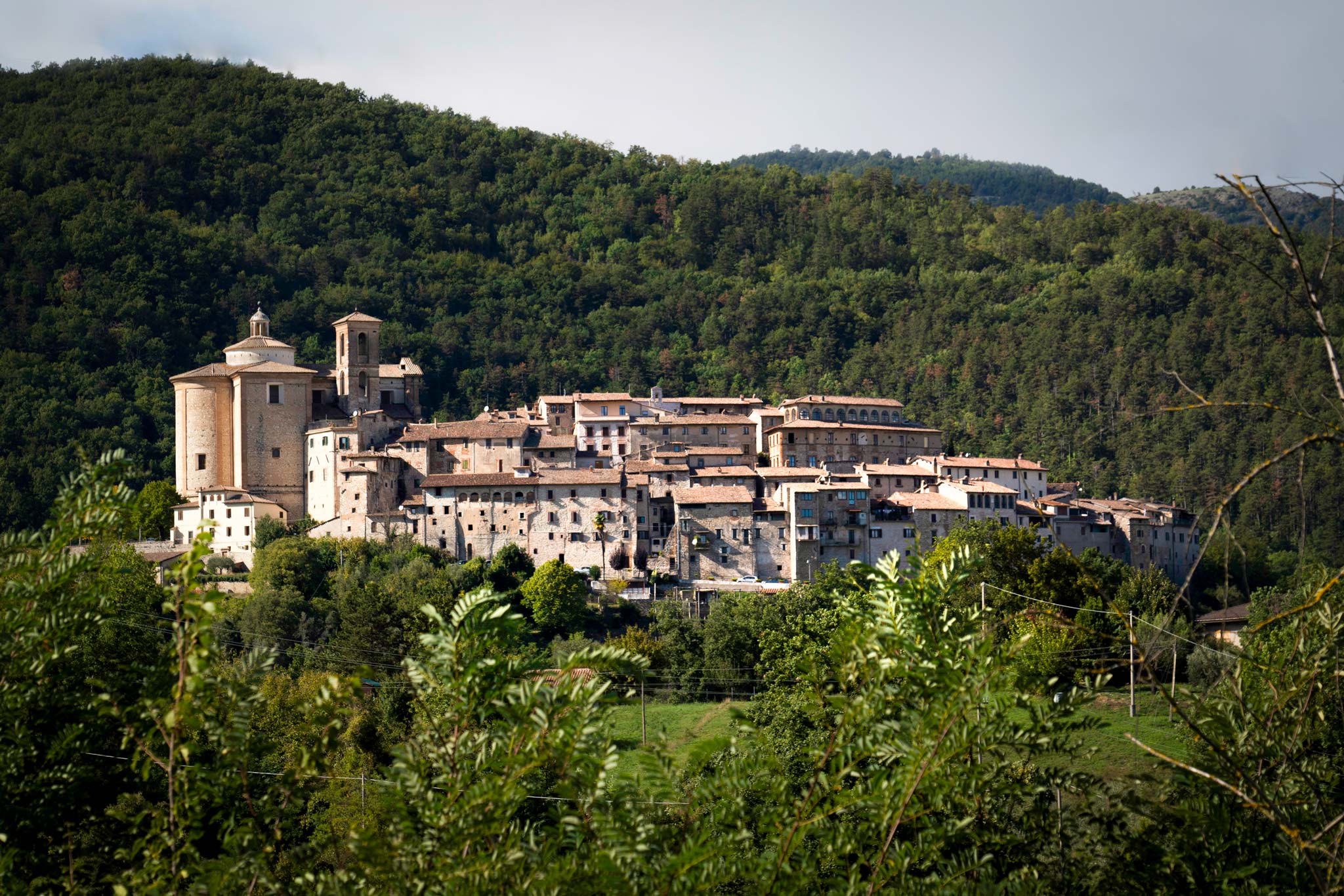
Contigliano
If you don’t have a car and want to explore the province and small Italian towns around, then Rieit is a good base. Alternatively, there are plenty of walking trails to get around, the most famous being the Saint Francis Walk, part of the much longer Via Francigena.
Why visit? Historical ruins pre-dating the Romans, plenty of culture to discover, and a lively centre
That was until 2014 when Pope Francis opened the palace and gardens to the public, and now they are a popular tourist attraction, often combined with a visit to the Vatican city. While I didn’t tour them this time (book tickets in advance), I found other ways to enjoy the borgo and spent a few nights here. This, I found, allowed me to enjoy the village in a slumber, as being one of the most popular places near Rome to visit by train on a quick day trip, it can feel quite crowded during the holidays or weekends.
Where to stay? Many of the places to stay in Vitorchiano are private home rentals, which are handy as here would make a good base for a few nights exploring the Province of Viterbo. While this is a fantastic day trip near Rome, it’s a bit further away, so you might want to stay for a few nights.
Why visit? Delicious wines, beautiful vineyard views, and a get-away-from-it-all feel
This garden complex which was shaped by the statues in the 16th century displays the work of sculptor Simone Moschino. Around 40 figures, from the mythical to the obscene, are dotted around the walking path, each seemingly more imposing than the last.
You’ll find a cluster of spacious streets inside the village, all topped with a grand church boasting magnificent panoramas. There’s also a walking trail, the Path of the Artists, through the hamlet, linking religious frescoes and paintings which adorn people’s homes together. The historical connection with the birth scene of Jesus is also celebrated, with the International Nativity Museum displaying hand-crafted scenes from all across the world, which, even if you’re not overly into religious art, can be appreciated for their detailed work.
The Abbey of Fossanova is one of the smallest villages near Rome, as the abbey and the borgo are one and the same. Constructed in 1135 and consecrated in 1208, for many years, the oldest Cistercian monastery in Italy stayed closed to the world, except for a guesthouse reserved for pilgrims and those passing by.

Labro
How to get there? By public transport from Rome, you can either take the Cotral bus to Rieti and then change to the Labro bus, or a train to Terni and then a second train, the quickest journey is around two and a half hours. By car, Contigliano is about two hours from Rome.
Top tip: When walking the streets of Greccio, try and spot (and peek inside) the workshops of the nativity scene makers
Why visit? Quaint, rounded village surrounded by gorgeous valley and river countryside
Top tip: Get up early to hike Santo Stefano Hill at sunrise; the low clouds and magnificent views from the chapel are worth it.
This article was written in collaboration with iambassador for the ‘Viaggio Italiano’ Project (Italian National Tourist Board, Ministry of Tourism & Conference of Regions and Autonomous Provinces) following my own tour of the region in Autumn 2022.
Of all the villages near Rome I explored, it was here I was most able to dive into Lazio’s modern regional history, the deepest, thanks to the fantastic, modern, and well-curated museum which recently opened here.
Why visit? Incredible volcanic rock-topped villages dotted with history and statues
Of course, those awarded the ‘I Borghi più Belli d’Italia‘ (most beautiful villages in Italy) title were ravishing, but each one I set foot in had its own captivating charm, and I hope you find the chance to craft your own unforgettable journey through Lazio, far from the crowds of Rome.
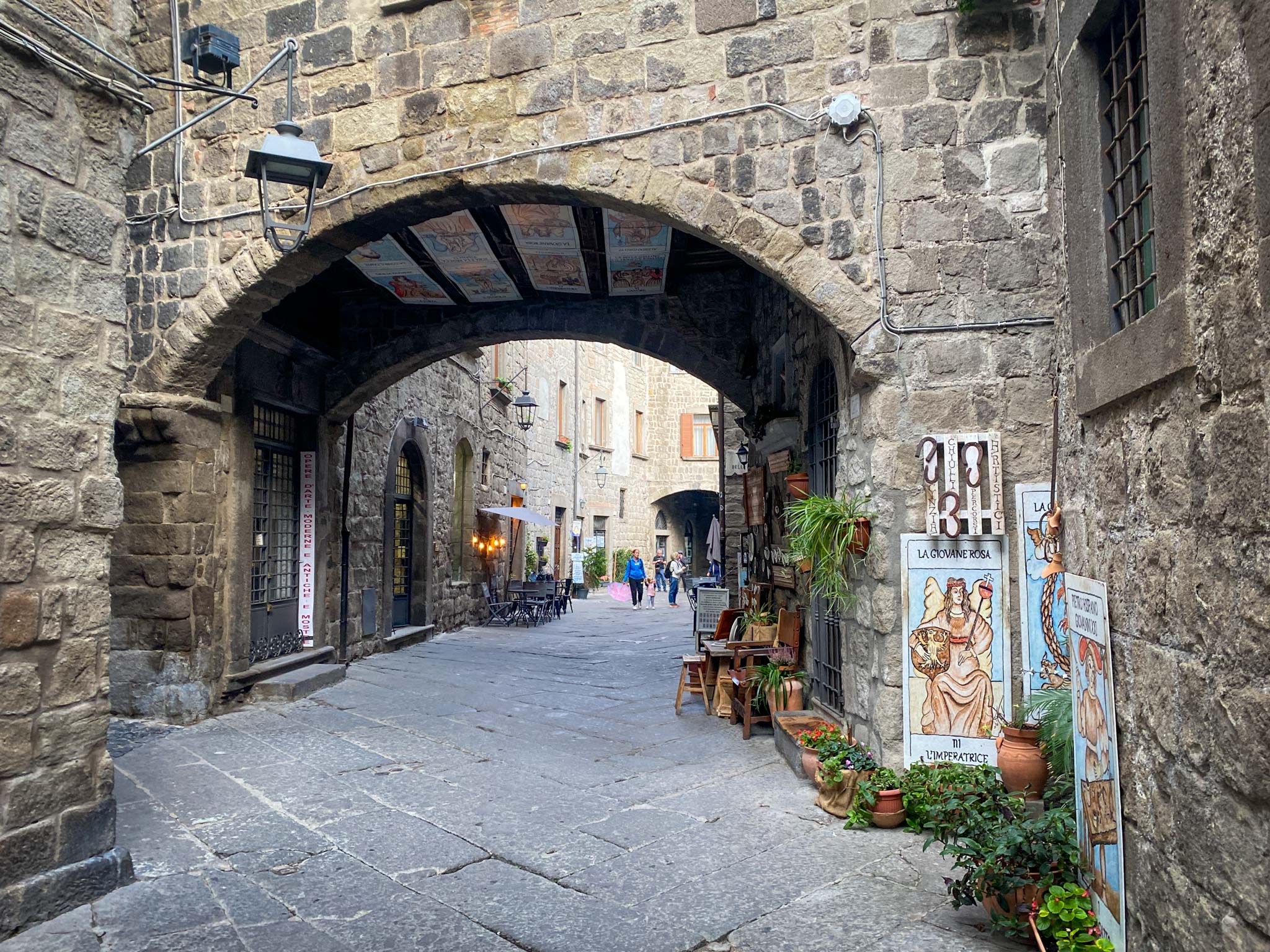
Further north: Province of Viterbo – places near Rome and Florence
How to get there? By public transport from Rome, you can take a train to Cassino, and then a Cotral bus, the total journey time will be between three and four hours. By car, it takes a little under two hours to drive, or from Naples, it’s 90-minutes.
If you’re seeking a dreamy image of those beautiful small towns in Italy which simply cry out to be enjoyed, then San Donato Val di Comino is calling your name.

Vitorchiano
Nearby, you’ll find some of the other most delightful villages near Rome, such as Ariccia, Lanuvio and Nemi, so Castel Gandolfo serves as a decent base for both hamlet hopping, but also exploring Rome if you don’t want to stay in the capital proper.
Inside the borgo proper, there’s an enchanting mix of viewpoints, homes above sheer-rock faces, lively and trendy bars with a youthful vibe, and many impressive architectural finds.
If you are considering places to visit near Rome to stay a while and relax, little Atina will happily oblige. There isn’t too much to do here, but the central core of the medieval borgo has a handful of high-quality restaurants and even a few trendy bars (excellent Negronis) to enjoy, and you can even sleep in a palace.
Where to stay? Arpino is a great place to base yourself in the south, as there is plenty going on here. Historic Il Cavalier D’Arpino (it used to be a wool factory) provides a wonderfully grand stay with a pool a short walk from the centre. If you want to explore the valley by public transport, though, you may find Sora offers you better connections.
At the Santuario Della Santissima Annunziata, don’t miss the jaw-dropping Cappella dell Immacolata Concezione behind. This Renaissance Sistine gilded chapel is coated in gold, with impressive paintings by masters Scipione Pulzone and Giovanni Filippo Criscuolo. The Church of Saint Francis of Assisi’s tower, with its Islamic details, is equally as striking, while the Church of Saint Francis towers above, providing perhaps the village’s best viewpoint.
Where to stay? Nemi’s compact size means it can be a day trip from Rome or combined with a visit to Castel Gandolfo. However, as with all the beautiful small towns in Italy, slowing down is the name of the game, and if you wish to spend some nights here, the rooms at il Lago di Nemi (closer to the lake than the village) promise a tranquil retreat.
The Museum of the Twentieth Century and the Shoah focuses on the battles which took place in the forested mountains backing the villages, when 1000s of English soldiers hid among the undergrowth, battling with the approaching German soldiers in the valley. Most moving and hardest to digest are the stories of the Jewish community that arrived here, many stripped of their documents and hidden in local houses.
Once a complete castle village surrounded by double fortified walls, from the highest point, you can enjoy a magnificent panorama across the olive oil groves and valley below. While the tower is shorter than it once was, the 14th-century church alongside it (a friendly neighbour has the key) has grown, and the frescoes inside are impressive.
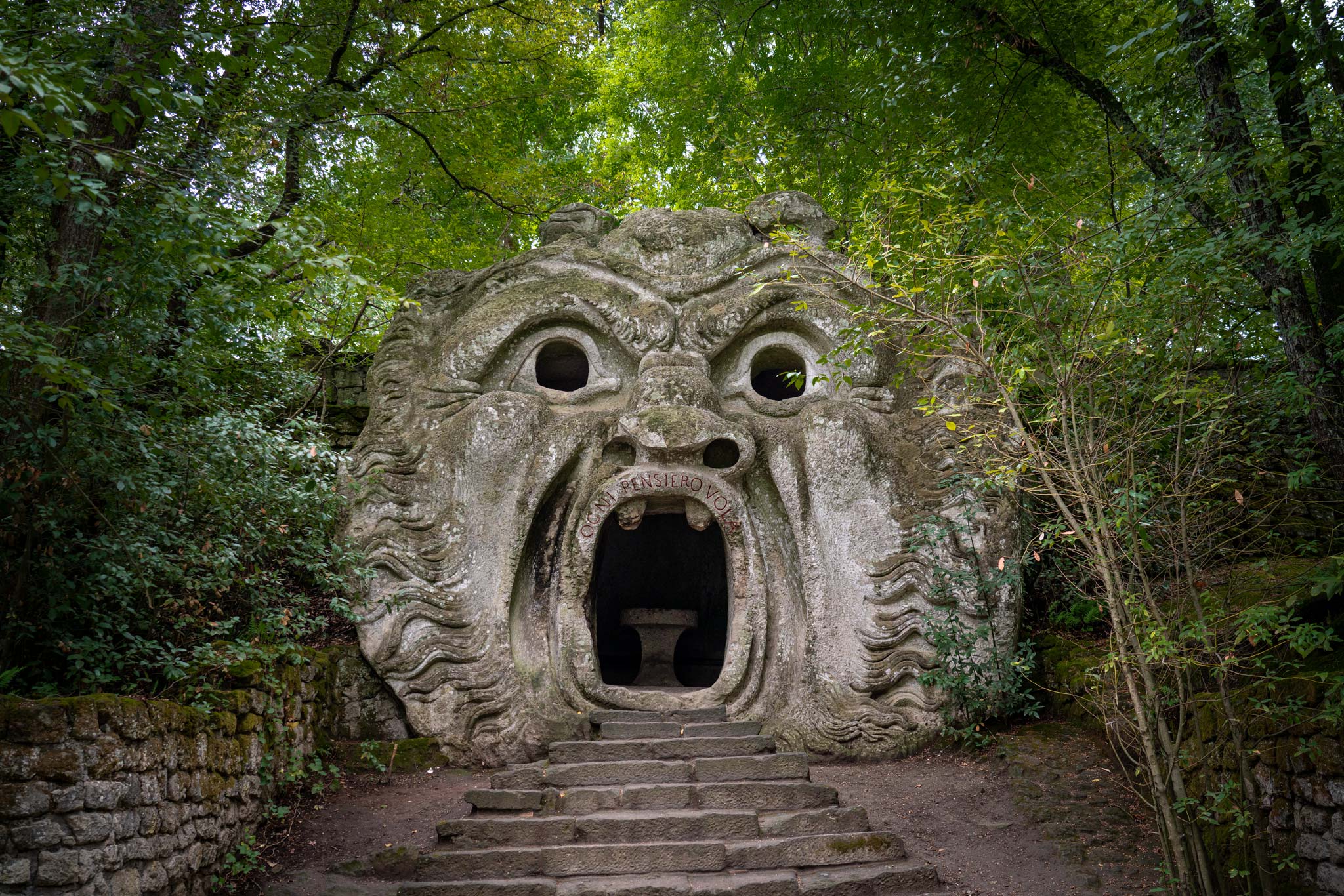
Bomarzo
Where to stay? Contigliano and Greccio could be combined into a day trip from Rome, however, these small villages in Italy, especially when coupled with the valley and Rieti itself, make for a relaxing longer trip. The Abbey accommodation suggested for Greccio is also close to here, or you may want to base yourself in Rieti.
Reached by following the trail down the hill, this huge palace is a multi-layered and multi-floored museum packed with Roman artefacts and treasures. The mosaics steal the show, though, with the vast and detailed Nile Mosaic of Palestrina (a Hellenistic period floor piece since restored and displayed on a wall) sure to leave you spellbound.
Here, the Etruscans had a stronghold and, before the Romans, shaped the lands. Perhaps the most apparent discovery relating to this period is the Etruscan Pyramid, which was only discovered in 1991. Later, in 2008, Salvatore Fosci, a local of Bomarzo, set about to clear the weeds and vegetation that had kept this ancient site closed off to visitors and started leading tours here.
There’s also an archaeological museum, though some of the most ancient and important treasures found here now live in Rome’s museum. Many of these artefacts came from Santo Stefano Hill, which rises next to the village, and although you can see the megalithic walls on a hike there, the most impressive site is the valley from the Cappella della Madonnella hugging its side.
Starting closest to the country’s capital, the area surrounding the eternal city is the best option if you seek day trips near Rome rather than an overnight stay or slow-paced rural village escape.
I spent most of my time here around the Valle di Comino, where some huge battles took place, but now it’s a serene setting of olive groves, mountains, and beautiful small villages near Rome.
How to get there? By public transport from Rome, take a train to Orte or Viterbo and then a Cotral bus; the journey can take as little as one hour. By car, Bomarzo is 90-minutes from Rome or just over two hours from Florence.
While parts of this village near Rome were destroyed after the war when a passing train full of explosives detonated in the valley, much has been reconstructed, with more work planned to ensure the borgo’s history is all brought back to life. The new part of the town is also full of life, so you can enjoy the community here without feeling like you’re in one of Italy’s ghost villages.
Where to stay? While Atina could be visited in half a day, or you’ll need more hours if done as a day trip from Rome, the views of the valley are a serene place to rest, and the converted palace of Palazzo del Senatore has amazing views from the breakfast terrace, though I found the attic rooms a little cramped with the low ceilings and lack of regal features, so for the full palatial experience, opt for the upgrade.
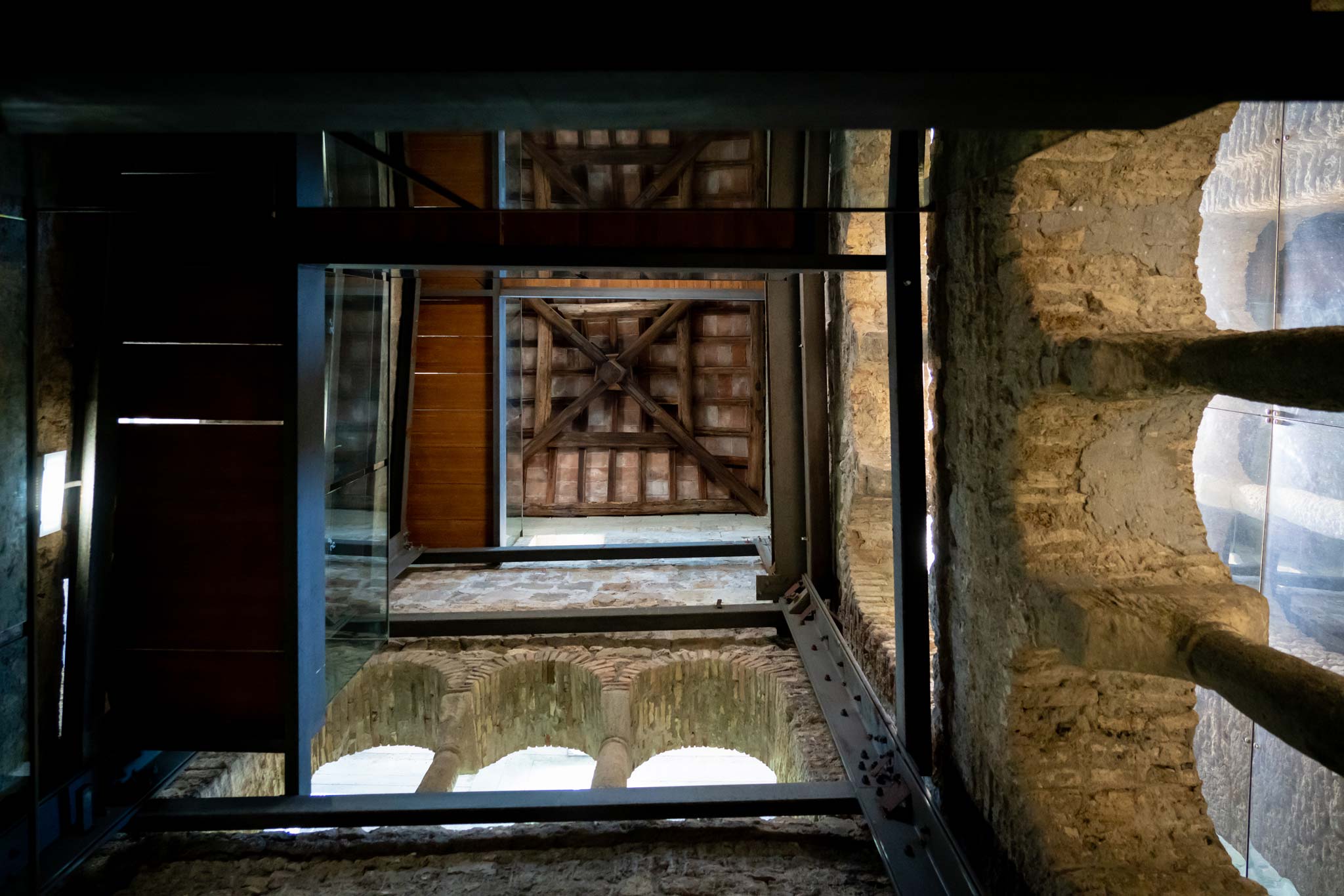
Bassano in Teverina
Of course, the castle is the star and dominates this village near Rome. Built by the Caetani (or Gaetani) family, as was much of the village, it tells the story of this noble Italian family. Hailing from nearby Gaeta, they were hugely successful in politics, most recognised with the election of Pope Boniface VIII in 1294.
How to get there? By public transport from Rome, the best connection is to take a Cotral bus to Rieti and then change to the Labro bus; the quickest journey is around two and a half hours. By car, Labro is a two-hour drive from Rome.
Why visit? A magical village by the sea with beaches, nightlife and plenty of architecture to enjoy
Top tip: Avoid the weekends (and peak season) to skip the crowds, and if you want something fun to do, take a 90-minute mosaic class.
Constructed in the 11th century in honour of Saint Philip Neri, who lived here, the Sanctuary of Montagna Spaccata is just as much about the spectacular nature as prayer.
How to get there? By public transport from Rome, you can take a train to Cassino, and then a Cotral bus, the total journey time should be around three and a half hours. By car, it’s a little over an hour and a half, the same distance as from Naples.
Where to stay? At first glance, Fossanova’s small size makes it seem like a place for a fleeting visit, however, this is one of my favourite places I stayed exactly for that reason – it’s the perfect place to slow down and a fairly good base even if you are using public transport, as the local bus network connecting to the train station is decent. I loved our cute apartment in Casette Rosse, with plenty of space and a shaded balcony.
Of course, tearing yourself away from the country’s attraction-packed, sightseeing-centric and footfall-heavy capital is a tough decision to make. However, if you’re not in the mood for a non-stop city break and instead want to slow down and savour the good things in life alongside the best Italian experiences, the countless small towns in Italy close to Rome promise plenty of historical insight still but served up with a much more laid-back atmosphere.
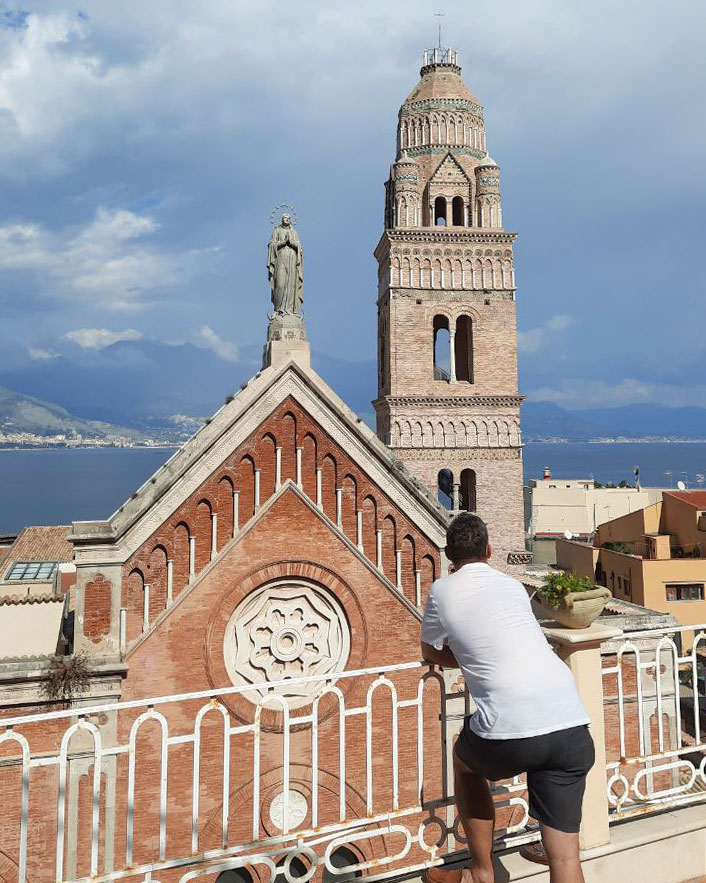
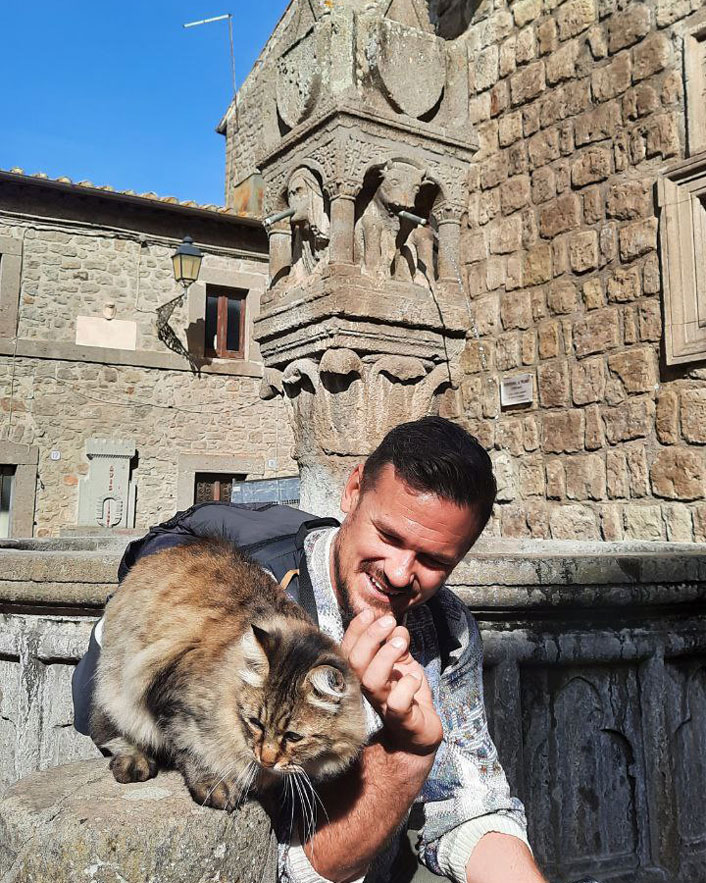
How to get there? By public transport from Rome, you can take a train to Cassino, and then a Cotral bus, the total journey time should be just over three hours. By car, it’s a 100-minute drive, around the same as from Naples.
Why visit? To slow down amongst the stunning setting against the mountains overlooking the Comino Valley



